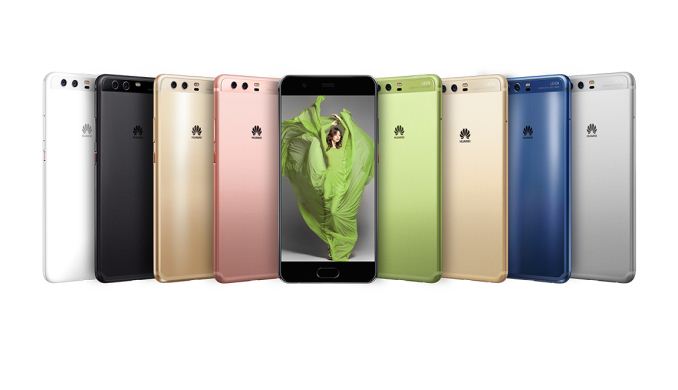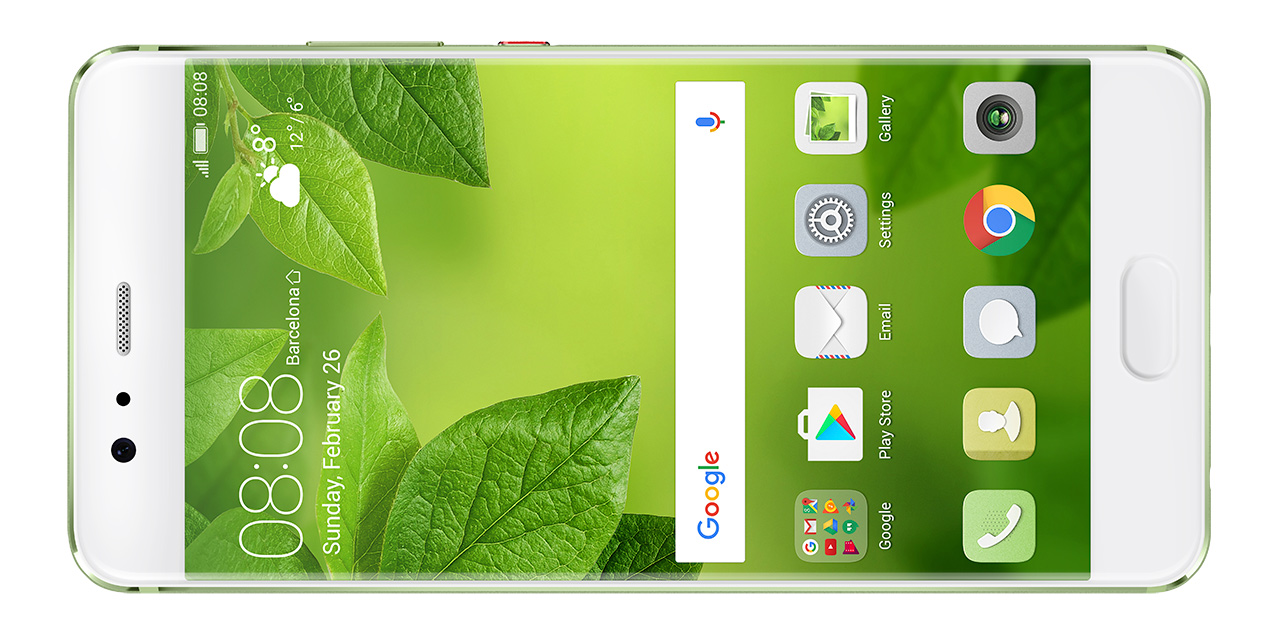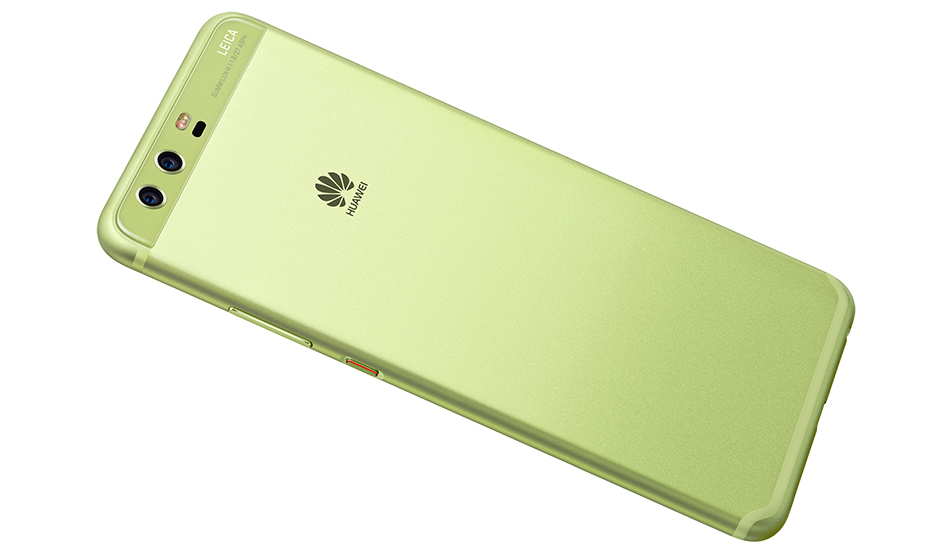Huawei P10 and P10 Plus: Performance & Battery Life Report
by Matt Humrick on May 12, 2017 7:00 AM EST
Huawei is clearly focused on improving the performance of its flagship phones. The P9 and its Kirin 955 SoC performed well in our tests and was smooth and quick during everyday use. For the P10 and P10 Plus, Huawei has tweaked the underlying hardware and software to make them perform even better for longer.
Huawei’s EMUI software includes several features to keep the system feeling more responsive. Using the F2FS filesystem for the /data partition improves storage performance, and Huawei’s new “Machine Learning algorithm” prioritizes system resources (CPU, memory, and storage) to improve responsiveness and performance for the foreground app. Huawei is also using compression to increase the amount of data held in working memory.
| Huawei P10 Series | ||
| Huawei P10 | Huawei P10 Plus | |
| SoC | HiSilicon Kirin 960 4x Cortex-A53 @ 1.84GHz 4x Cortex-A73 @ 2.36GHz ARM Mali-G71 MP8 @ 1037MHz |
|
| Display | 5.1-inch 1920x1080 IPS LCD | 5.5-inch 2560x1440 IPS LCD |
| Dimensions | 145.3 x 69.3 x 6.98 mm 145 grams |
153.5 x 74.2 x 6.98 mm 165 grams |
| RAM | 4GB | 4GB / 6GB |
| NAND | 32GB / 64GB / 128GB + microSD |
64GB / 128GB / 256GB + microSD |
| Battery | 3200 mAh (12.23 Wh) non-replaceable |
3750 mAh (14.33 Wh) non-replaceable |
| Modem | HiSilicon LTE (Integrated) 2G / 3G / 4G LTE |
|
| SIM Size | 1x or 2x NanoSIM | |
| Wireless | 802.11a/b/g/n/ac 2x2 MU-MIMO, BT 4.2, NFC, GPS/Glonass/Galileo/BDS | |
| Connectivity | USB 2.0 Type-C, 3.5mm headset | |
| Launch OS | Android 7.0 with EMUI 5.1 | |
| Software Version Tested | Android 7.0 VTR-L09C432B112 |
Android 7.0 VKY-L29C900B109 |
Inside the new phones is HiSilicon’s Kirin 960 SoC, which uses a big.LITTLE arrangement of four ARM Cortex-A73 CPUs and four Cortex-A53 CPUs. When we looked at the Kirin 960 earlier this year, we found that its A73 core showed higher integer IPC than the Kirin 950/955’s A72 core, but that floating-point IPC generally regressed. The Kirin 960 registered improvements to the memory subsystem too. Even though our lower-level testing produced mixed results, the Kirin 960, which is also used in Huawei’s Mate 9, performed well when running common workloads such as web browsing and photo editing.
In addition to the new CPU, the Kirin 960 also includes a significantly upgraded GPU. The Mali-G71MP8 includes twice as many cores as the Mali-T880MP4 GPU in Kirin 950/955. It’s also based on ARM’s new Bifrost architecture, which includes a number of improvements over the previous Midgard architecture that should help improve shader core utilization.
Huawei, like other OEMs, is currently struggling to procure some of the other internal components—notably NAND and RAM—which can impact overall system performance. Samsung, SK Hynix, and Toshiba have said that they are struggling to produce enough flash memory in the face of increased demand, especially for higher density modules, and issues with ramping up 3D NAND production. This shortage, which applies to DRAM as well, started in 2016 and will likely extend through the remainder of 2017.
With supplies short and component costs rising, Huawei confirmed that it is sourcing memory components from multiple suppliers and stated that it never committed to using any specific type of NAND. Indeed, P10 owners are claiming that some units are using eMMC instead of UFS NAND, along with both LPDDR3 and LPDDR4 RAM. Multi-sourcing is actually very common among smartphone OEMs, particularly larger ones such as Apple, Huawei, LG, and Samsung, for a number of different components, including NAND, RAM, display panels, modems/RF, and camera sensors. Apple has even sourced SoCs from different foundries. Problems can arise, however, if the OEM does not hold its suppliers to the same standards and allows parts from different vendors to vary wildly in performance, which, unfortunately, happens all too frequently.
Based on Huawei’s official statement, we have no way to know who its suppliers are, what components they are or are not using (LPDDR3/LPDDR4, eMMC/UFS), or how many phones are using the potentially slower components. It only said that component selection is random based on the current supply and that there is no way for consumers to know what they are buying before opening the box.
In this report, we’ll establish what components our particular P10 and P10 Plus review units use, and then run them through a series of tests to evaluate everyday performance and battery life. Huawei was able to extend the Mate 9’s battery life over the previous generation, so it will be interesting to see if this is true for the P10 as well.












74 Comments
View All Comments
philehidiot - Friday, May 12, 2017 - link
Another review site did come to this conclusion. I think the issue is that the smartphone has hit perfection in many ways, just like the old T9 based phones of old. There's only so far you can go with a form factor before something new has to come along. Samsung is trying with it's display (as is LG) but frankly I don't give a crap about HDR on my phone screen. I do care about HDR on my TV or PC monitor but that's because I'll sit and watch a film on it. If you're watching a film on a smartphone, you're likely on a train or somewhere where the ambient lighting is going to be more of an issue than the dynamic range of the screen. I just don't see the hardware formula going anywhere anytime soon unless someone comes out with something completely different. They are all merging on the same kind of platform. Google has the software in hand so there's little to differentiate on, unless you're a bunch of idiots and think that Bixby has a chance up against the might of Google.... why, Samsung, why waste the resources?!Stochastic - Friday, May 12, 2017 - link
Samsung's displays really are better than everyone else's, though: http://www.displaymate.com/Galaxy_S8_ShootOut_01.h...That's the kind of performance I'd be willing to pay a premium for.
Meteor2 - Saturday, May 13, 2017 - link
...crap speakers though. I want a picture which looks good -- but also a sound which sounds good.Meteor2 - Saturday, May 13, 2017 - link
"I think the issue is that the smartphone has hit perfection in many ways, just like the old T9 based phones of old."That's a good way of thinking of it, though I think/hope there's room for improvement in battery life and performance. But with the A73 being more of a sideways move compared to the A72, despite being very different, I do wonder if we're reaching a limit.
philehidiot - Wednesday, May 24, 2017 - link
I think we're reaching a limit in terms of what you can do with the form factor that's going to vastly improve the user experience. I'm sure there will be little things here and there but from what I feel, they're now just ensuring you have to upgrade every couple of years in order to maintain the user experience. I am on an S810 based phone and there is absolutely no reason why this should struggle with normal use at all yet just recently (just before the S835 was released), updates came along which introduced vast amounts of lag. The solution? Well I'm sure it's to upgrade to ensure I once again have smooth performance. You don't get anything really new, you're paying a fortune for the basics to remain the same and for incremental improvements which don't really make a massive difference. If it wasn't for the battery life being dire and the introduction of poorly optimised software creating issues which didn't need to be there, would I upgrade? Probably not.As it stands I'm left with little choice due to the tyranny of planned obsolescence and it seems to me that they want nearly a grand every two years to tread water in many respects.
amdwilliam1985 - Friday, May 12, 2017 - link
I agree with most of the posts here in regards to false advertising, Huawei is ruining their newly built reputation, it's a huge NOT recommend from me to any of my friends & families.I understand there are supply shortages(other OEMs do too), so I would much prefer if they advertise the P10 phones with eMMC 5.1 & LPDDR3 @ lower price points, then reviewers report people getting UFS & LPDDR4(icing on the cake with lucky draws).
On a separate topic, why is it that Huawei and OnePlus are using F2FS, but Samsung and the other didn't? As far as I can tell and read, F2FS was created by Samsung and it basically gives you "free" performance.
serendip - Friday, May 12, 2017 - link
On the other hand, phones with slower RAM and NAND might have lower power consumption. I'd be wary of Huawei's advertising and pricing though; it's obscene to charge flagship prices for EMMC storage. Maybe they could do block 1 or block 2 variant pricing so users know which hardware they're getting.Stochastic - Friday, May 12, 2017 - link
I thought UFS and LPDDR4 were also more power efficient?Eden-K121D - Friday, May 12, 2017 - link
UFS LPDDR4/X are more efficient so you're going to get worse battery life on the shitty phonesphilehidiot - Wednesday, May 24, 2017 - link
They could do what LG did with the G5 - they had a version with a slower SoC but the same screen and camera set up and sold it cheaper. Probably had slower RAM and so in as well. For many people that makes a lot of sense as the top tier chips are only slightly better for general use and really a bit of a waste if you don't game or do a fair bit of video / photo editing.